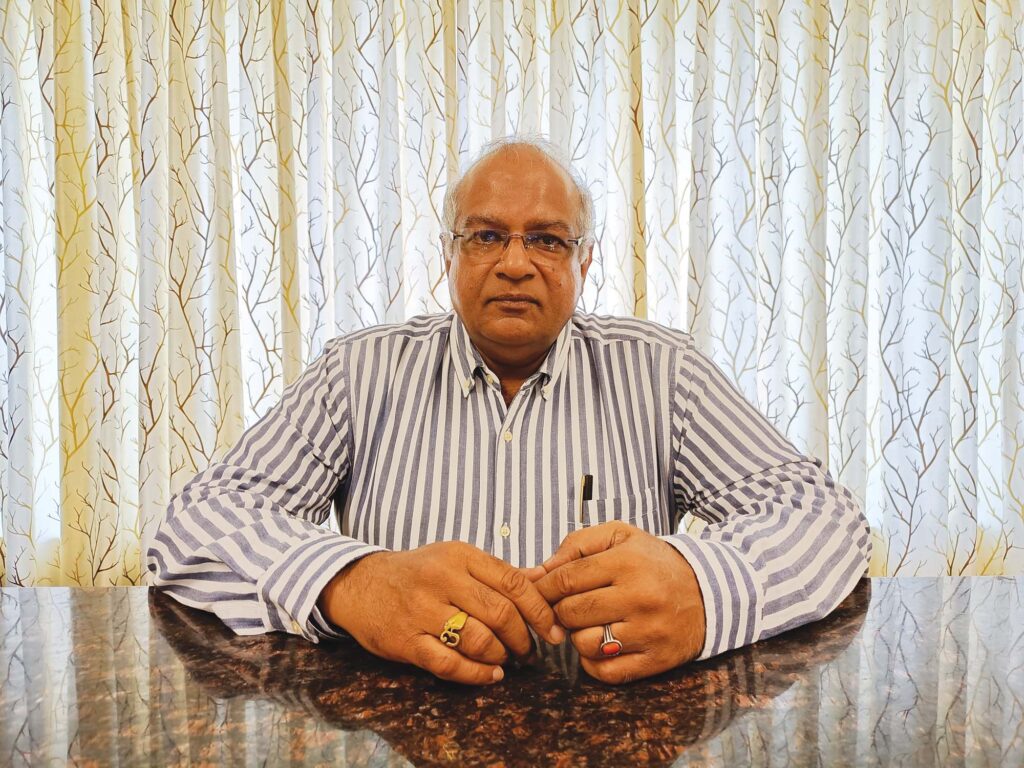
In a candid interaction with M. Stephen, Ravii Shankar, Hon. Secretary of Chennai Goods Transport Association (CGTA) spoke about the history of Chennai Goods Transport Association, one of the most powerful transport bodies in the country, its achievements, challenges, and future plans. He also shares insights on the evolving landscape of goods transport in India, the impact of technology, the potential of electric vehicles, and much more.
When and why was Chennai Goods Transport Association formed?
Chennai Goods Transport Association (CGTA) was established in 1972 with the primary goal of fostering unity and addressing the needs of professionals and companies in the transport industry in Chennai. Stalwarts, experienced individuals, and professionals who recognized the necessity for a unified body, came together, joined hands, and started Chennai Goods Transport Association. CGTA has since been a steadfast advocate for the industry. In a unique approach, CGTA operates on a company-based membership model, ensuring consistency even if individuals within a company change. Additionally, in 1996, CGTA established the Chennai Goods Transport Association Charitable Trust, dedicated to socio-economic welfare and charitable activities related to the transport industry and its members.
What is the member strength of the association and what is the total fleet size of all your vehicles? What are CGTA’s notable achievements?
Currently, CGTA boasts a membership of just under 300, down from 350-370 pre-Covid. Operating with a fleet of approximately 15,000 vehicles primarily for long-distance transportation across India, CGTA has made significant strides in advocating for its members’ interests. Noteworthy achievements include successfully campaigning against a ‘no-entry’ ban in Chennai in 1995, addressing goods theft during transportation, in collaboration with the police, securing an exemption from the first Tax Deducted at Source (TDS) for transporters during 1995-96. CGTA actively engages in social welfare activities, providing aid during natural disasters, setting up kitchens during floods, offering medical assistance and scholarships to children of the staff of member companies and students from Government schools, and organizing medical camps for the staff members of member companies.

What are the main challenges and opportunities for the Indian truck and logistics sector?
The industry grapples with unhealthy competition, oversupply of vehicles, lack of available loads, and a significant shortage of trained drivers. This leads to cost-cutting measures that can be detrimental to profitability. Unhealthy cut-throat competition and lack of unity negates and retards the visible progress. As long as transporter ‘A’ feels that the problems faced by transporter ‘B’ and transporter ‘C’ are their “individual issues”, while the problems faced by him is the “industry’s problem”, things will never move in the right direction. Following Agriculture, the transport sector is largest employment generator in our Country. Despite its significant contribution to the economy, the transport industry often does not receive the respect it deserves.
However, the sector holds promise, with educated individuals and IT professionals entering the industry, the business scenario is changing for the better. Transportation costs in India being relatively lower than in other countries, addressing challenges related to competition, infrastructure, driver well-being, and recognizing the sector’s economic contribution are vital steps toward future development.
What are your thoughts on electric vehicles (EVs) in India and their impact on goods transport?
While EVs offer short-term cost-effectiveness and reduces pollution. Challenges such as charging infrastructure, battery costs, and long-term sustainability need careful consideration. Availability of charging infrastructure is crucial for widespread adoption. Advancements in battery technology are expected to reduce costs over time. Longer ranges and faster charging times are essential for making EVs practical for long-haul transportation. Policymakers and industry stakeholders must collaborate to address these challenges for sustainable EV adoption in goods transport.
What are the future plans for the growth and expansion of Chennai Goods Transport Association? And what are the top priorities for you to address?
Increasing member strength from grass root level remains a top priority for CGTA. We plan to implement and execute a major recruiting drive on a war footing, to ensure that we achieve a target of 500 members. This will significantly help in enhancing our influence when dealing with industry challenges and authorities. CGTA actively educates and trains members, conducts seminars, and invests in the personal development of managerial staff. Understanding attrition reasons and improving member’s staff retention are crucial for the association’s sustainability. Focusing on addressing members’ specific needs, from regulatory issues to skill development and market conditions, will continue to be a key focus.
In terms of technology, what are the major trends you are seeing in the trucking industry today?
Technology has significantly improved various aspects of transportation and logistics. GPS technology revolutionized navigation, leading to increased efficiency and reduced fuel consumption. Advanced vehicle monitoring systems provide real-time alerts for maintenance needs, enhancing vehicle condition. Fleet management software optimizes fleet usage, reducing operating costs. Vehicle design advancements enable larger and more efficient trucks, reducing the need for multiple journeys. Information technology enhances human resources management and safety measures, contributing to a safer working environment for drivers and improved services for consumers.
Any other message you would like to share with the industry?
Public education about the transport industry’s diverse roles, forming professional associations, investing in training programs, engaging with stakeholders, and strategic public relations campaigns are crucial steps to change public perception of the sector. Advocacy for fair treatment, recognition of the industry’s importance, and rebranding efforts emphasizing professionalism and reliability are essential. Corporate Social Responsibility initiatives and a commitment to professionalism and social responsibility will further enhance the industry’s image. By taking these steps, the transport industry can overcome challenges, improve public perception, and contribute significantly to the economy and society.